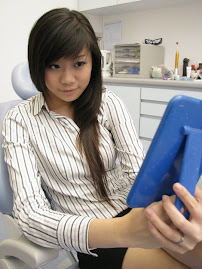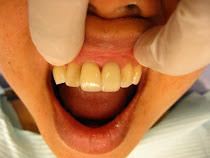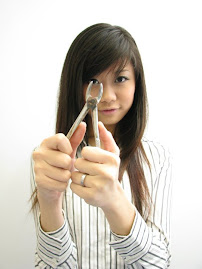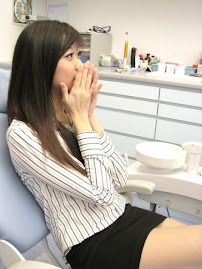Not directly related to cosmetic dentistry, but we often get referrals from orthodontists to remove wisdom teeth. Most wisdom tooth surgeries are uneventful. However, due to anatomic variations, vital structures may sometimes get in the way of the surgeon.
Nerve injury will then be a possible risk. Check out this article and learn how to assess your own risk from your x-ray.
Wisdom teeth can be troublesome. The last teeth to erupt in the mouth, they often end up half buried, hitting against the next tooth or even lying down horizontally. A variety of problems will follow when these teeth fail to erupt properly. Some “deviant” wisdom teeth can trap food and cause bad breath. That’s not all. If these food traps are not properly cleaned out, decay and gum infection will follow.
Ouch! That sounds painful already, but left untreated, wisdom teeth can cause even more painful damage. Many people end up losing the next tooth. Some suffer from recurrent gum boils. In most cases, the best and perhaps only treatment is the surgical removal of that “deviant” tooth.
Different kinds of impaction will require slightly different techniques. In practically all cases, the gums will need to be cut. Next, the bone surrounding the tooth may need to be trimmed away. For the simple cases, the tooth can be removed at this juncture. If the tooth is angulated against the tooth in front, s further step is necessary. The tooth needs to be divided into 2 or more parts. The deeper and more angulated it is, the more bone needs to be trimmed and the tooth may also need to be further divided into smaller parts.
Needless to say, some wisdom teeth are more difficult to remove than others. The degree of difficulty and the risk often depends on the depth of the impaction, the angulation relative to the next tooth, the curvature of the roots, the quality of the patient’s bone, any medical condition, oral hygiene and even the attitude of the patient.
Surgical intervention is never a perfect cure. Complications can occur and it may not be because of the dentist’s lack of skill or care. Prolonged bleeding and infection are relatively easy to manage. Much more difficult to manage, would be nerve damage and prolonged numbness.
The xray above shows a high risk, difficult operation which I’ve successfully performed recently. The risk of nerve damage or paresthesia depends very much on the anatomic location of the nerves relative to the wisdom tooth. The closer the nerve to the tooth, the higher the chance of nerve damage during surgery. The dentist will be able to assess the risk of nerve damage to the inferior alveolar nerve from your xray. This nerve runs in your lower jaw bone and hence, its entire course in the bone is almost always visible in a panoramic xray. If your dentist uses digital xrays, you may bring a thumb drive to copy the file and see for yourself where the inferior alveolar nerve lies.

I’ve traced out the course of the nerve in the above patient for you just in case you can’t see or identify it. If the nerve is close by, it would mean that the chances of nerve injury will be high. If the tooth is not giving any problems, leave it alone. If it’s troubling you or if it is necessary to remove it for orthodontic treatment, then you must weigh out the risk versus benefit. To do that, you must be aware of the consequences of nerve damage.
1. Feeling of numbness of the lip and chin even after the anesthesia has worn off.
2. Drooling.
3. Inability to hold food at one corner of the mouth
This has to be one of the trickiest wisdom tooth surgery I’ve done. Nevetheless, I was cautious and made sure that the nerve was not cut. After surgery, the patient above suffered loss of sensation on the left side of her lip and chin. The numbness recovered partially after a few days. Near complete recovery was felt after 2 weeks. The nerve was probably just slightly displaced during the surgery.
Check out this other xray. This surgery took me more than one hour. Technically, it was more difficult than the other surgery you saw earlier. However, the nerve seems somewhat further. Do you know where it is?
It’s been traced out for you in the xray above. After the anesthesia wore off, this patient experienced a loss of sensation on her left lip just like the other patient. However, this patient recovered fully in just 2 days. The nerve was obviously just minimaly disturbed.
Thankfully, I have not encountered a single case of permanent nerve damage in almost 20 years of private practice. Many patient’s who have undergone a particularly difficult or risky surgery would experience prolonged numbess for a day or two. Some recovery after a week or two. The majority would have recovered after a month. The longest a patient ever took to recover from numbness under my care, was 6 months.
Looking at these figures, nerve damage certainly doesn’t seem as frightening as it sounds. Nevertheless, it is important to note that even in the hands of the most skilled and experienced practitioner, something unexpected can happen. If your xray looks anything like those above, you should do a risk assessment with your dentist to determine if you would like to go through with it.
Having said that, the majority of wisdom tooth surgeries (over 98%) heal uneventfully. Note that these two cases are atypically complicated.
























































